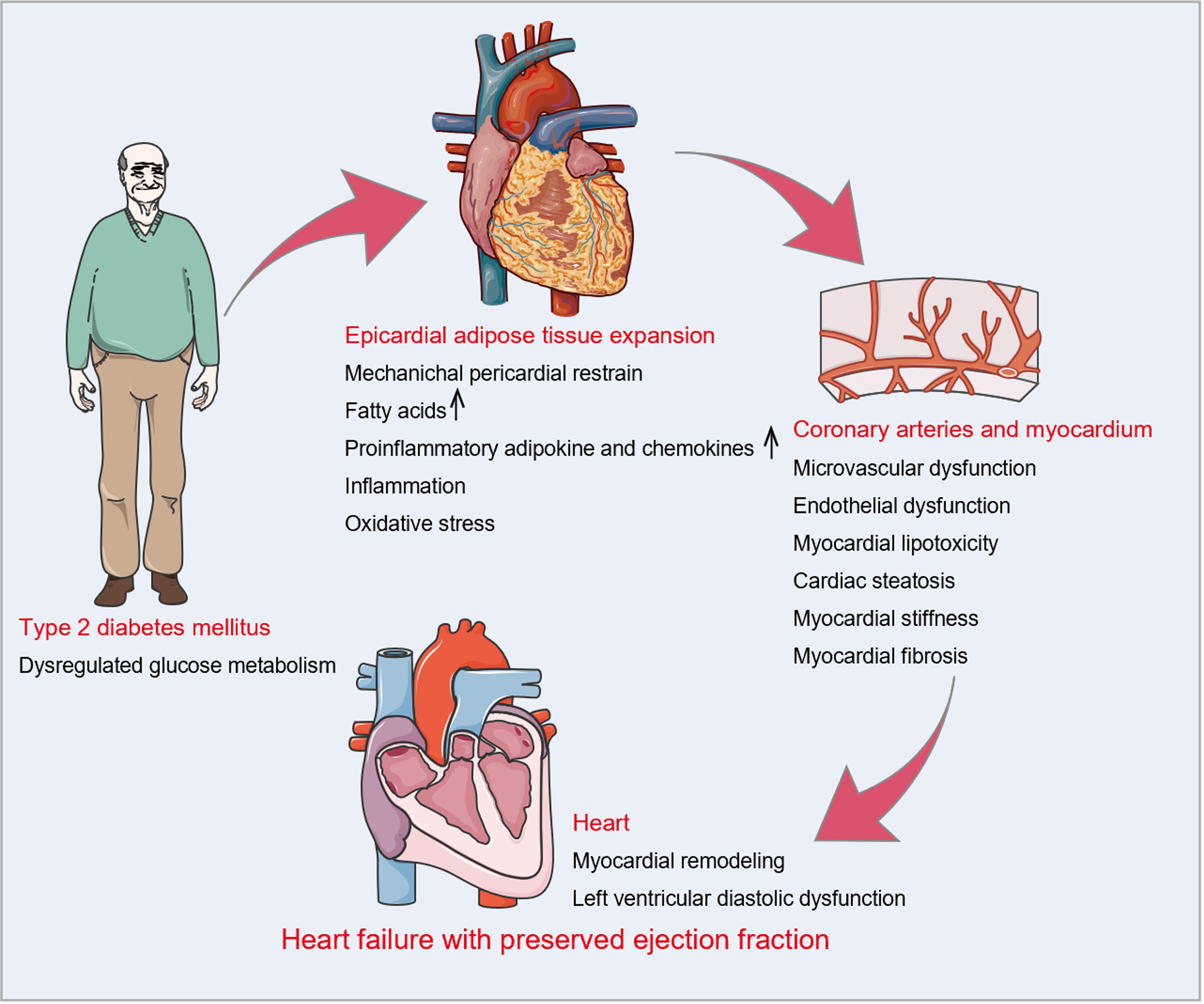Copyright
©The Author(s) 2023.
World J Diabetes. Jun 15, 2023; 14(6): 724-740
Published online Jun 15, 2023. doi: 10.4239/wjd.v14.i6.724
Published online Jun 15, 2023. doi: 10.4239/wjd.v14.i6.724
Figure 2 Epicardial adipose tissue in the pathophysiology of heart failure with preserved ejection fraction with type 2 diabetes mellitus.
Dysregulated glucose metabolism is intimately related to the expansion of epicardial adipose tissue (EAT). Increased EAT deposition interacts directly with the heart through mechanical and metabolic mechanisms. Mechanically, EAT expansion may directly contribute to pericardial restrain, resulting in left ventricular (LV) diastolic dysfunction. Metabolically, EAT enlargement is linked to the buildup of free fatty acids, which may induce myocardial lipotoxicity and cardiac steatosis. Simultaneously, hypertrophic adipocytes and activated macrophages secrete numerous proinflammatory adipocytokines and chemokines in EAT. Subsequent local inflammation, excessive oxidative stress, microvascular and endothelial dysfunction, and myocardial stiffness and fibrosis ultimately lead to LV remodeling and diastolic dysfunction.
- Citation: Shi YJ, Dong GJ, Guo M. Targeting epicardial adipose tissue: A potential therapeutic strategy for heart failure with preserved ejection fraction with type 2 diabetes mellitus. World J Diabetes 2023; 14(6): 724-740
- URL: https://www.wjgnet.com/1948-9358/full/v14/i6/724.htm
- DOI: https://dx.doi.org/10.4239/wjd.v14.i6.724









